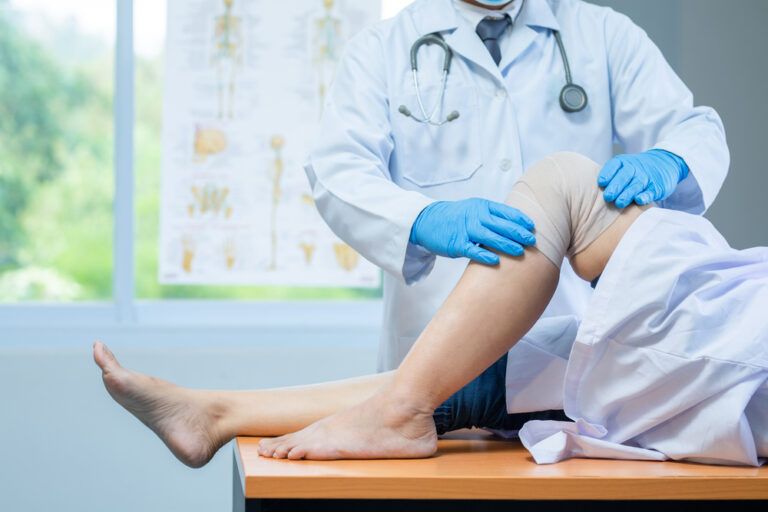Emerging Technologies in Orthopedics: What Patients Should Know

Space Coast Orthopedic in Merritt Island, FL, is proud to serve a community that increasingly benefits from innovations in medical science. One of the most exciting areas of advancement is orthopedic care, where new technologies are revolutionizing the diagnosis and treatment of bone, joint, and spine conditions. Whether you’re dealing with chronic joint pain or recovering from an injury, understanding these emerging tools can help you make informed decisions about your care.
Advances in Imaging and Diagnostics
Orthopedic diagnostics have significantly improved thanks to advancements in imaging technology. Traditional X-rays and MRIs are being supplemented or replaced by more advanced modalities, such as high-resolution 3D imaging and functional MRI (fMRI). These technologies provide detailed anatomical views that allow physicians to see micro-level damage in cartilage, tendons, and ligaments—often before symptoms even begin. This early detection can be crucial for preventing further degeneration and improving long-term outcomes.
Additionally, functional imaging tools are making it possible to observe how joints move in real-time. This adds a dynamic component to the diagnostic process, enabling physicians to gain a more comprehensive understanding of the biomechanics of your condition. As these technologies continue to evolve, they are expected to become more accessible and may eventually be used in routine orthopedic screenings.
Robotic-Assisted Surgery
Robotic-assisted surgery is revolutionizing orthopedic procedures, particularly in joint replacement. Systems such as MAKO and ROSA use preoperative imaging to create a 3D model of a patient’s anatomy, which surgeons use to plan and execute procedures with remarkable precision. The robot acts as an extension of the surgeon’s hand, ensuring consistent cuts and ideal placement of implants.
What sets robotic surgery apart is its ability to reduce human error and variability. This means shorter surgery times, fewer complications, and quicker recoveries. Patients often report better joint function and less post-operative pain compared to traditional methods. While not all patients are candidates for robotic-assisted procedures, this technology continues to expand into other areas, including spinal and trauma surgeries.
3D Printing in Orthopedic Care
3D printing is more than a buzzword—it’s a transformative tool in orthopedics. Custom implants created using 3D printing can match a patient’s unique anatomy more closely than standard off-the-shelf devices. This customization can lead to improved implant integration and longevity, particularly in complex joint reconstructions or when revision surgery is required.
Surgeons also use 3D-printed models for pre-surgical planning. These life-sized replicas of bones and joints enable a tactile, visual preview of the operation, improving accuracy and reducing surgical time. In pediatric orthopedics, where anatomical variance is high, this level of precision is especially valuable. For patients, it means fewer surprises during surgery and a potentially smoother recovery.
Regenerative Medicine and Biologic Therapies
Regenerative medicine is gaining momentum as a non-surgical or adjunctive treatment option in orthopedics. Treatments such as platelet-rich plasma (PRP), bone marrow aspirate concentrate (BMAC), and stem cell therapy utilize the body’s own healing agents to accelerate tissue repair. PRP involves concentrating platelets from your blood and injecting them into damaged tissue, while BMAC and stem cells can stimulate cartilage regeneration and bone healing.
While still under clinical review for many uses, early studies show promise in managing conditions like osteoarthritis, tendinitis, and ligament injuries. These therapies are especially appealing to patients looking to delay or avoid surgery. However, it’s important to understand that results can vary and not all treatments are FDA-approved for all orthopedic conditions.
Wearable Technology and Smart Monitoring
One of the most patient-accessible advancements is wearable orthopedic technology. Devices such as smart knee braces, posture trackers, and even orthopedic insoles can monitor movement, joint angles, and weight distribution in real time. These devices often sync with mobile apps to provide both patients and healthcare providers with actionable data.
This constant feedback loop can help optimize rehabilitation after surgery or injury. It also enables early detection of issues like improper gait or muscle imbalances that could lead to future injury. In chronic conditions such as arthritis, wearables can be used to track flare-ups and activity levels, empowering patients to take an active role in their own care plan.
Artificial Intelligence in Orthopedics
Artificial intelligence (AI) is no longer a futuristic concept—it’s becoming an integral part of modern orthopedic practice. AI algorithms are being trained to interpret imaging studies, predict surgical outcomes, and even recommend treatment plans based on vast datasets. One key advantage is the ability to identify subtle patterns that the human eye may overlook.
AI also plays a role in post-operative monitoring, where machine learning can detect early signs of complications, such as infections or implant failure, before they become clinically obvious. Personalized treatment plans driven by AI have the potential to improve not only outcomes but also patient satisfaction and cost efficiency.
Benefits and Considerations for Patients
These emerging technologies offer a wide range of benefits, including shorter recovery times, reduced pain, greater surgical accuracy, and better long-term outcomes. Patients in Merritt Island and surrounding areas are increasingly benefiting from these innovations, especially as they become more integrated into standard orthopedic practice.
However, it’s essential to approach these advancements with informed caution. Not every technology is suitable for every patient, and access can vary depending on factors like insurance, provider training, and clinical evidence. At Space Coast Orthopedic, patients are encouraged to stay informed and ask thoughtful questions during consultations, especially when new technologies are involved in their treatment plan.
An Informed Future in Orthopedic Care
Staying up to date with orthopedic innovation is more than just academic; it’s a way for patients to advocate for better health outcomes. Whether you’re preparing for a joint replacement, recovering from an injury, or exploring non-surgical options, knowing what’s available can lead to more confident decisions. Space Coast Orthopedic is proud to be part of a community where curiosity, science, and care intersect to support better musculoskeletal health.
Resources
- Bichsel, L., Nisar, A., & Seil, R. (2021). Emerging Technologies in Orthopaedics: Current Concepts and Future Directions. Journal of Experimental Orthopaedics.
- Siston, R. A., & Delp, S. L. (2019). Robotic-Assisted Joint Replacement: Review of Current Technology and Future Trends. Orthopedic Clinics of North America.
- Pandit, H., & Murray, D. W. (2020). The Use of AI in Orthopaedics: Clinical Implications and Current Research. Bone & Joint Journal.


Recent Comments